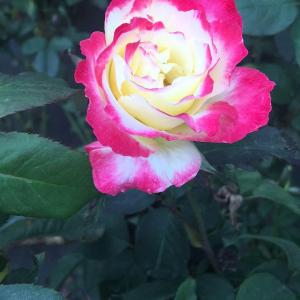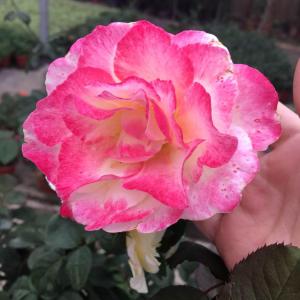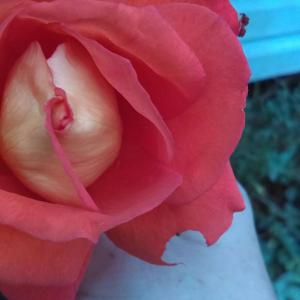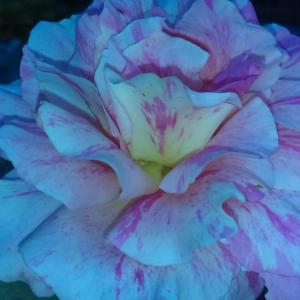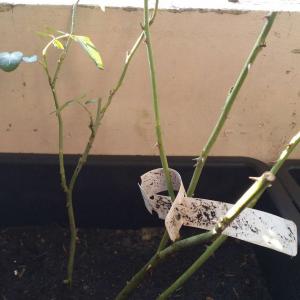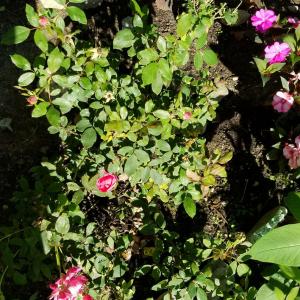文章
Dummer. ゛☀
2017年10月02日

Scientific Name
Hypericum perforatum L.

Common Names
Common St. John’s Wort, St. John’s Wort, Goatweed, Klamath Weed, Klamathweed, Perforate St. John’s Wort, Racecourseweed, Tipton’s Weed, Tiptonweed, Rosin Rose, Chase-Devil
Synonyms
Hypericum assurgens, Hypericum deidesheimense, Hypericum lineolatum, Hypericum marylandicum
Scientific Classification
Family: Hypericaceae
Genus: Hypericum

Flower
Color: Yellow
Bloom Time: Between late spring and early to mid summer
Description
Hypericum perforatum has erect stems which can grow up to 100 inches (2.5 m) of height. Leaves are small, the size of up to 1.6 inches (4 cm), egg-shaped, opposite and stemless, full of small and translucent dots or glands filled with essential oils. The flowers appear in broad cymes at the ends of the upper branches, between late spring and early to mid summer.

How to Grow and Care
If you live in USDA plant hardiness zones 5 or 6 to 10 and have a partially shaded site, you can probably grow St. John’s Wort. The plant isn’t particular about the soil type. It grows well in sand, clay, rocky soil or loam, and tolerates acidic to slightly alkaline pH.
St. John’s Wort adapts to both moist and dry soil, and even tolerates occasional flooding. It also withstands drought but grows best with irrigation during prolonged dry spells. You won’t find a plant that will thrive in more situations.
Growing St. John’s Wort herb in a location with too much sun can lead to leaf scorch, while too much shade reduces the number of flowers. The best location is one with bright morning sunlight and a little shade in the hottest part of the afternoon.
If your soil isn’t particularly fertile, prepare the bed before transplanting. Spread about 2 inches (5 cm) of compost or rotted manure over the area and dig it in to a depth of at least 8 inches (20 cm). Transplant the shrubs into the garden, setting them at the height at which they grew in their containers. They grow only 1 to 3 feet (30 to 90 cm) tall with a spread of 1.5 to 2 feet (45 to 60 cm), so space them 2 to 3 feet (60 to 90 cm) apart. Water slowly and deeply after planting and keep the soil moist until the transplants are well-established.
Origin
Native to temperate and subtropical regions of Europe, Turkey, Ukraine, Russia, Middle East, India, and China.
Hypericum perforatum L.

Common Names
Common St. John’s Wort, St. John’s Wort, Goatweed, Klamath Weed, Klamathweed, Perforate St. John’s Wort, Racecourseweed, Tipton’s Weed, Tiptonweed, Rosin Rose, Chase-Devil
Synonyms
Hypericum assurgens, Hypericum deidesheimense, Hypericum lineolatum, Hypericum marylandicum
Scientific Classification
Family: Hypericaceae
Genus: Hypericum

Flower
Color: Yellow
Bloom Time: Between late spring and early to mid summer
Description
Hypericum perforatum has erect stems which can grow up to 100 inches (2.5 m) of height. Leaves are small, the size of up to 1.6 inches (4 cm), egg-shaped, opposite and stemless, full of small and translucent dots or glands filled with essential oils. The flowers appear in broad cymes at the ends of the upper branches, between late spring and early to mid summer.

How to Grow and Care
If you live in USDA plant hardiness zones 5 or 6 to 10 and have a partially shaded site, you can probably grow St. John’s Wort. The plant isn’t particular about the soil type. It grows well in sand, clay, rocky soil or loam, and tolerates acidic to slightly alkaline pH.
St. John’s Wort adapts to both moist and dry soil, and even tolerates occasional flooding. It also withstands drought but grows best with irrigation during prolonged dry spells. You won’t find a plant that will thrive in more situations.
Growing St. John’s Wort herb in a location with too much sun can lead to leaf scorch, while too much shade reduces the number of flowers. The best location is one with bright morning sunlight and a little shade in the hottest part of the afternoon.
If your soil isn’t particularly fertile, prepare the bed before transplanting. Spread about 2 inches (5 cm) of compost or rotted manure over the area and dig it in to a depth of at least 8 inches (20 cm). Transplant the shrubs into the garden, setting them at the height at which they grew in their containers. They grow only 1 to 3 feet (30 to 90 cm) tall with a spread of 1.5 to 2 feet (45 to 60 cm), so space them 2 to 3 feet (60 to 90 cm) apart. Water slowly and deeply after planting and keep the soil moist until the transplants are well-established.
Origin
Native to temperate and subtropical regions of Europe, Turkey, Ukraine, Russia, Middle East, India, and China.
0
0
文章
Dummer. ゛☀
2017年10月02日

Scientific Name
Hibiscus rosa-sinensis L.
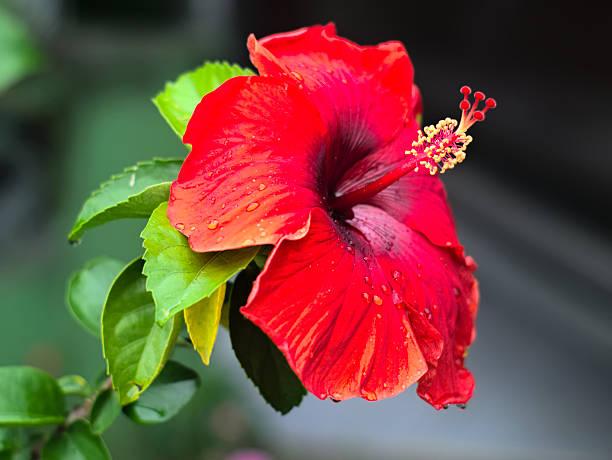
Common Names
Rose Mallow, Chinese Hibiscus, Hawaiian Hibiscus, China Rose, Rose of China, Shoe Flower
Synonyms
Hibiscus boryanus, Hibiscus festalis, Hibiscus storckii
Scientific Classification
Family: Malvaceae
Tribe: Hibisceae
Genus: Hibiscus

Flower
Color: Red to dark red
Bloom Time: In summer and autumn
Description
Hibiscus rosa-sinensis is a bushy, evergreen shrub or small tree, up to 16 feet (5 m) tall and up to 10 feet (3 m) wide. The dark green, toothed leaves are up to 6 inches (15 cm) long, arranged alternately on the branches and ovate in shape. The brilliant red, 5-petaled flowers are 4 inches (10 cm) in diameter. The fruit is a dry, five parted capsule that contains up to three seeds.

How to Grow and Care
Hibiscus should be moved outside in the summer, then back inside during the winter. Tips for a successful transition include: Trim the plant hard before moving it inside for the winter. It will go into near dormancy until late winter; After you trim it, but before you bring it in, treat it thoroughly for insects. Neem oil and liquid detergent work well, or use a hose to blast off insects; Once inside, don’t overwater, but provide as much humidity as possible, including daily mistings. Don’t expose to blowing air from vents; When the weather warms to above 50ºF (10ºC) at night, move it back outside and acclimate slowly.
Repot as necessary, yearly or biannually. Hibiscus will grow into trees in their native habitats, but this may be unwieldy in a home setting. There’s also some benefit to keeping the Hibiscus in a relatively smaller pot, as it will make for easier pruning and moving. Failure to repot these plants often can leave them in soil without adequate nutrients for their survival, and repotting will often spur on growth if you’re finding that your Hibiscus plants seem to have stalled out. Watch out for falling leaves or other signs of stress.
Origin
Native to East Asia.
Hibiscus rosa-sinensis L.

Common Names
Rose Mallow, Chinese Hibiscus, Hawaiian Hibiscus, China Rose, Rose of China, Shoe Flower
Synonyms
Hibiscus boryanus, Hibiscus festalis, Hibiscus storckii
Scientific Classification
Family: Malvaceae
Tribe: Hibisceae
Genus: Hibiscus

Flower
Color: Red to dark red
Bloom Time: In summer and autumn
Description
Hibiscus rosa-sinensis is a bushy, evergreen shrub or small tree, up to 16 feet (5 m) tall and up to 10 feet (3 m) wide. The dark green, toothed leaves are up to 6 inches (15 cm) long, arranged alternately on the branches and ovate in shape. The brilliant red, 5-petaled flowers are 4 inches (10 cm) in diameter. The fruit is a dry, five parted capsule that contains up to three seeds.

How to Grow and Care
Hibiscus should be moved outside in the summer, then back inside during the winter. Tips for a successful transition include: Trim the plant hard before moving it inside for the winter. It will go into near dormancy until late winter; After you trim it, but before you bring it in, treat it thoroughly for insects. Neem oil and liquid detergent work well, or use a hose to blast off insects; Once inside, don’t overwater, but provide as much humidity as possible, including daily mistings. Don’t expose to blowing air from vents; When the weather warms to above 50ºF (10ºC) at night, move it back outside and acclimate slowly.
Repot as necessary, yearly or biannually. Hibiscus will grow into trees in their native habitats, but this may be unwieldy in a home setting. There’s also some benefit to keeping the Hibiscus in a relatively smaller pot, as it will make for easier pruning and moving. Failure to repot these plants often can leave them in soil without adequate nutrients for their survival, and repotting will often spur on growth if you’re finding that your Hibiscus plants seem to have stalled out. Watch out for falling leaves or other signs of stress.
Origin
Native to East Asia.
0
0
文章
Dummer. ゛☀
2017年10月02日

Scientific Name
Helleborus niger L.

Common Names
Christmas Rose, Black Hellebore, Black Helleborus
Scientific Classification
Family: Ranunculaceae
Subfamily: Ranunculoideae
Tribe: Helleboreae
Genus: Helleborus

Flower
Color: White
Bloom Time: Midwinter to early spring
Description
Helleborus niger is an evergreen perennial, up to 12 inches (30 cm) tall, with dark green, leathery, pedate leaves carried on stems. The flowers are large and flat, white, or occasionally pink, up to 3 inches (7.5 cm) wide, borne on short stems from midwinter to early spring.

How to Grow and Care
When planting from seed or division, place the Hellebore into well-draining, organic soil in a filtered sun or shady location. The Hellebore plant will return for many years; make sure the space will accommodate growth and has proper sunlight.
Hellebores need no more than a few hours of dappled light and grow successfully in shady areas. Plant the Hellebore under deciduous trees or scattered through a woodland garden or shaded natural area.
Soaking the soil in which the Hellebore is growing helps the Hellebore plant to look its best. Hellebore care includes removal of older leaves when they appear damaged. Care for Hellebores should also include careful fertilization. Too much nitrogen may result in lush foliage and a shortage of blooms.
Plant Hellebore seeds in the fall. A 60-day moist chilling period is needed when planting seeds of the Hellebore plant. Planting seed in fall allows this to happen naturally in areas with cold winters. Wait three to four years for blooms on young plants grown from seed. Divide overgrown clumps in spring, after flowering or in autumn.
Origin
Native to southern Europe and Asia.
Helleborus niger L.

Common Names
Christmas Rose, Black Hellebore, Black Helleborus
Scientific Classification
Family: Ranunculaceae
Subfamily: Ranunculoideae
Tribe: Helleboreae
Genus: Helleborus

Flower
Color: White
Bloom Time: Midwinter to early spring
Description
Helleborus niger is an evergreen perennial, up to 12 inches (30 cm) tall, with dark green, leathery, pedate leaves carried on stems. The flowers are large and flat, white, or occasionally pink, up to 3 inches (7.5 cm) wide, borne on short stems from midwinter to early spring.

How to Grow and Care
When planting from seed or division, place the Hellebore into well-draining, organic soil in a filtered sun or shady location. The Hellebore plant will return for many years; make sure the space will accommodate growth and has proper sunlight.
Hellebores need no more than a few hours of dappled light and grow successfully in shady areas. Plant the Hellebore under deciduous trees or scattered through a woodland garden or shaded natural area.
Soaking the soil in which the Hellebore is growing helps the Hellebore plant to look its best. Hellebore care includes removal of older leaves when they appear damaged. Care for Hellebores should also include careful fertilization. Too much nitrogen may result in lush foliage and a shortage of blooms.
Plant Hellebore seeds in the fall. A 60-day moist chilling period is needed when planting seeds of the Hellebore plant. Planting seed in fall allows this to happen naturally in areas with cold winters. Wait three to four years for blooms on young plants grown from seed. Divide overgrown clumps in spring, after flowering or in autumn.
Origin
Native to southern Europe and Asia.
0
1
文章
Dummer. ゛☀
2017年10月02日

Scientific Name
Helleborus lividus Aiton ex Curtis

Common Names
Majorcan Hellebore, Blue-Grey Hellebore, Purple Hellebore, Lenten Rose, Livid Lenten Rose
Synonyms
Helleborus trifolius subsp. lividus, Helleborus trifolius var. lividus, Helleborus triphyllus
Scientific Classification
Family: Ranunculaceae
Subfamily: Ranunculoideae
Tribe: Helleboreae
Genus: Helleborus

Flower
Color: Pinkish-green
Bloom Time: Midwinter to early spring
Description
Helleborus lividus is an evergreen perennial up to 18 inches (45 cm) tall and up to 12 inches (30 cm) wide, with biennial stems and deep green or bluish green, glossy leaves. The flowers are pinkish-green, up to 2 inches (5 cm) wide, borne in open clusters from midwinter to early spring.

How to Grow and Care
When planting from seed or division, place the Hellebore into well-draining, organic soil in a filtered sun or shady location. The Hellebore plant will return for many years; make sure the space will accommodate growth and has proper sunlight.
Hellebores need no more than a few hours of dappled light and grow successfully in shady areas. Plant the Hellebore under deciduous trees or scattered through a woodland garden or shaded natural area.
Soaking the soil in which the Hellebore is growing helps the Hellebore plant to look its best. Hellebore care includes removal of older leaves when they appear damaged. Care for Hellebores should also include careful fertilization. Too much nitrogen may result in lush foliage and a shortage of blooms.
Plant Hellebore seeds in the fall. A 60-day moist chilling period is needed when planting seeds of the Hellebore plant. Planting seed in fall allows this to happen naturally in areas with cold winters. Wait three to four years for blooms on young plants grown from seed. Divide overgrown clumps in spring, after flowering or in autumn.
Origin
Native to Majorca and possibly nearby Cabrera, Spain.
Helleborus lividus Aiton ex Curtis

Common Names
Majorcan Hellebore, Blue-Grey Hellebore, Purple Hellebore, Lenten Rose, Livid Lenten Rose
Synonyms
Helleborus trifolius subsp. lividus, Helleborus trifolius var. lividus, Helleborus triphyllus
Scientific Classification
Family: Ranunculaceae
Subfamily: Ranunculoideae
Tribe: Helleboreae
Genus: Helleborus

Flower
Color: Pinkish-green
Bloom Time: Midwinter to early spring
Description
Helleborus lividus is an evergreen perennial up to 18 inches (45 cm) tall and up to 12 inches (30 cm) wide, with biennial stems and deep green or bluish green, glossy leaves. The flowers are pinkish-green, up to 2 inches (5 cm) wide, borne in open clusters from midwinter to early spring.

How to Grow and Care
When planting from seed or division, place the Hellebore into well-draining, organic soil in a filtered sun or shady location. The Hellebore plant will return for many years; make sure the space will accommodate growth and has proper sunlight.
Hellebores need no more than a few hours of dappled light and grow successfully in shady areas. Plant the Hellebore under deciduous trees or scattered through a woodland garden or shaded natural area.
Soaking the soil in which the Hellebore is growing helps the Hellebore plant to look its best. Hellebore care includes removal of older leaves when they appear damaged. Care for Hellebores should also include careful fertilization. Too much nitrogen may result in lush foliage and a shortage of blooms.
Plant Hellebore seeds in the fall. A 60-day moist chilling period is needed when planting seeds of the Hellebore plant. Planting seed in fall allows this to happen naturally in areas with cold winters. Wait three to four years for blooms on young plants grown from seed. Divide overgrown clumps in spring, after flowering or in autumn.
Origin
Native to Majorca and possibly nearby Cabrera, Spain.
0
0
文章
Dummer. ゛☀
2017年10月02日

Scientific Name
Escobaria sneedii Britton & Rose
Common Names
Sneed’s Pincushion, Sneed’s Pincushion Cactus, Sneed’s Cory Cactus, Sneed’s Cscobaria, Carpet Foxtail Cactus
Synonyms
Coryphantha sneedii, Mammillaria sneedii
Scientific Classification
Family: Cactaceae
Subfamily: Cactoideae
Tribe: Cacteae
Genus: Escobaria
Description
Escobaria sneedii is a small cactus growing up to 11 inches (27 cm) tall. The species may branch profusely, even when small and immature. It is coated densely in patches of bright white spines; each patch may have nearly 100. Depending on the substrate, the spines may be tinted with yellow, pink, purple, or brown. They may have dark tips and as the cactus ages the spines darken to gray and even black. The shape of the spines separates the varieties: Escobaria sneedii var. sneedii has straight spines that spread from the areole and Escobaria sneedii var. leei has curved spines. The cactus blooms in spring, bearing flowers up to 1.2 inches (3 cm) long near the top of its body. The flower is variable in color. It can be bright to pale pink, white to off-white, greenish, or brownish in color. Each tepal may have a darker midstripe of most any color. The fruit is generally either red or green, usually tinged with other colors, and may be up to 0.8 inch (2 cm) long.
How to Grow and Care
The Escobaria are very susceptible to rot and therefore require a well-drained soil, without any water excess or stagnation; it has been observed that the plants also suffer the environmental humidity, which should preferably remain very low (30-50%). Avoid watering during the winter, when the plant is dormant: watering Escobaria in cold environmental conditions will almost certainly lead to death of the plant. In the growing season the plants, whose growth is typically quite slow, like to perceive a significant temperature difference between night and day.
Escobaria sneedii Britton & Rose
Common Names
Sneed’s Pincushion, Sneed’s Pincushion Cactus, Sneed’s Cory Cactus, Sneed’s Cscobaria, Carpet Foxtail Cactus

Synonyms
Coryphantha sneedii, Mammillaria sneedii
Scientific Classification
Family: Cactaceae
Subfamily: Cactoideae
Tribe: Cacteae
Genus: Escobaria

Description
Escobaria sneedii is a small cactus growing up to 11 inches (27 cm) tall. The species may branch profusely, even when small and immature. It is coated densely in patches of bright white spines; each patch may have nearly 100. Depending on the substrate, the spines may be tinted with yellow, pink, purple, or brown. They may have dark tips and as the cactus ages the spines darken to gray and even black. The shape of the spines separates the varieties: Escobaria sneedii var. sneedii has straight spines that spread from the areole and Escobaria sneedii var. leei has curved spines. The cactus blooms in spring, bearing flowers up to 1.2 inches (3 cm) long near the top of its body. The flower is variable in color. It can be bright to pale pink, white to off-white, greenish, or brownish in color. Each tepal may have a darker midstripe of most any color. The fruit is generally either red or green, usually tinged with other colors, and may be up to 0.8 inch (2 cm) long.

How to Grow and Care
The Escobaria are very susceptible to rot and therefore require a well-drained soil, without any water excess or stagnation; it has been observed that the plants also suffer the environmental humidity, which should preferably remain very low (30-50%). Avoid watering during the winter, when the plant is dormant: watering Escobaria in cold environmental conditions will almost certainly lead to death of the plant. In the growing season the plants, whose growth is typically quite slow, like to perceive a significant temperature difference between night and day.
1
1
文章
Dummer. ゛☀
2017年10月02日

Scientific Name
Dudleya virens (Rose) Moran
Common Names
Green Liveforever, Bright Green Dudleya
Synonyms
Cotyledon virens, Echeveria virens
Scientific Classification
Family: Crassulaceae
Subfamily: Sedoideae
Tribe: Sedeae
Subtribe: Sedinae
Genus: Dudleya
Description
Dudleya virens is an uncommon species of perennial, succulent plant. The leaves are fleshy and strap-shaped, up to 8 inches (20 cm) long and up to 1.2 inches (3 cm) broad, tapering from the base (or from near middle) and are mostly green. They are arranged in a rosette. The flowers are white, with five petals up to 0.4 inch (1 cm) long. Flowers are produced in April, May, and June.
How to Grow and Care
Most of the myriad habitats Dudleyas occupy become dry in summer. Therefore, it is important to cut off water to Dudleyas in your garden during summer. Plants grown in sandy soils or containers are exceptions; they will accept infrequent summer watering as long as the soil drains well. The onset of fall or winter rains reawakens Dudleyas from drought-induced dormancy. Their shriveled leaves plump up quickly, growth resumes, and flowering occurs during the next spring or summer. Dudleyas are amazingly resilient; if a portion of a colony sloughs off a cliff face or is uprooted by a burrowing animal, it can persist for months until soil contact is reestablished.
Dudleya virens (Rose) Moran
Common Names
Green Liveforever, Bright Green Dudleya

Synonyms
Cotyledon virens, Echeveria virens
Scientific Classification
Family: Crassulaceae
Subfamily: Sedoideae
Tribe: Sedeae
Subtribe: Sedinae
Genus: Dudleya

Description
Dudleya virens is an uncommon species of perennial, succulent plant. The leaves are fleshy and strap-shaped, up to 8 inches (20 cm) long and up to 1.2 inches (3 cm) broad, tapering from the base (or from near middle) and are mostly green. They are arranged in a rosette. The flowers are white, with five petals up to 0.4 inch (1 cm) long. Flowers are produced in April, May, and June.

How to Grow and Care
Most of the myriad habitats Dudleyas occupy become dry in summer. Therefore, it is important to cut off water to Dudleyas in your garden during summer. Plants grown in sandy soils or containers are exceptions; they will accept infrequent summer watering as long as the soil drains well. The onset of fall or winter rains reawakens Dudleyas from drought-induced dormancy. Their shriveled leaves plump up quickly, growth resumes, and flowering occurs during the next spring or summer. Dudleyas are amazingly resilient; if a portion of a colony sloughs off a cliff face or is uprooted by a burrowing animal, it can persist for months until soil contact is reestablished.
0
0
文章
Dummer. ゛☀
2017年10月02日

Scientific Name
Hatiora salicornioides (Haw.) Britton & Rose
Common Names
Dancing Bones, Dancing Bones Cactus, Drunkard’s Dream, Spice Cactus, Bottle Cactus
Synonyms
Rhipsalis salicornioides (basionym)
Scientific Classification
Family: Cactaceae
Subfamily: Cactoideae
Tribe: Rhipsalideae
Genus: Hatiora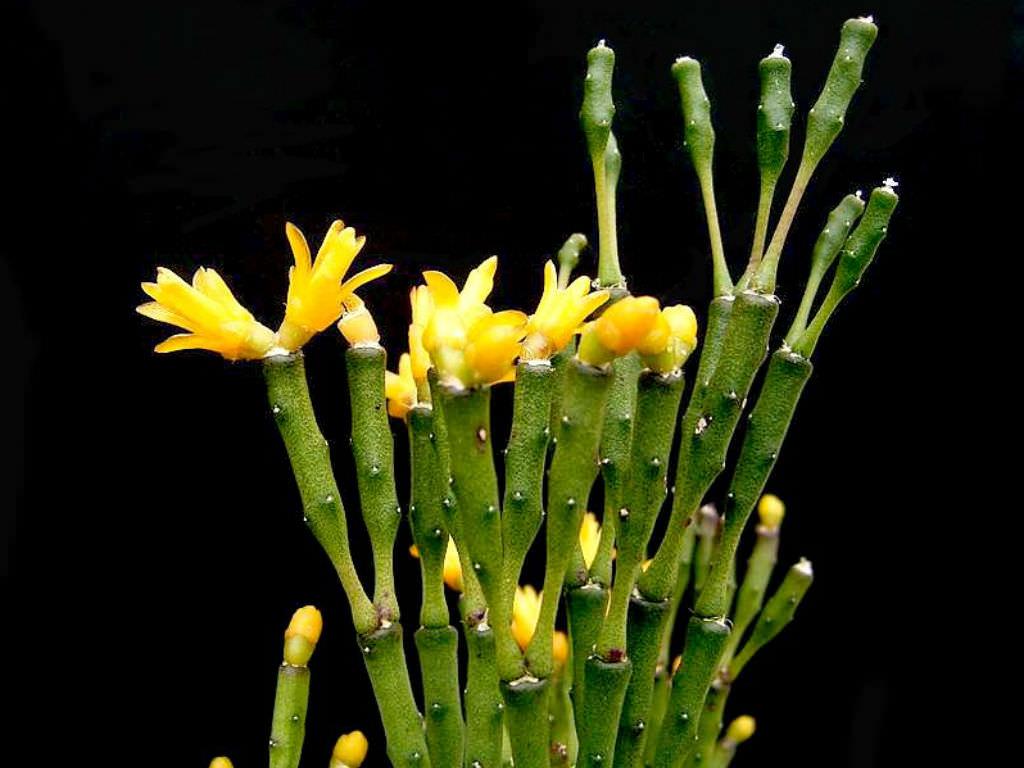
Description
Hatiora salicornioides is a slender, erect, arching or somewhat pendent, bushy, cactus, up to 2 feet (60 cm) tall. A stem consists of smaller segments, up to 1.2 inches (3 cm) long. The flowers are small, bell-shaped, orange yellow in color, up to 0.8 inch (2 cm) long and in diameter.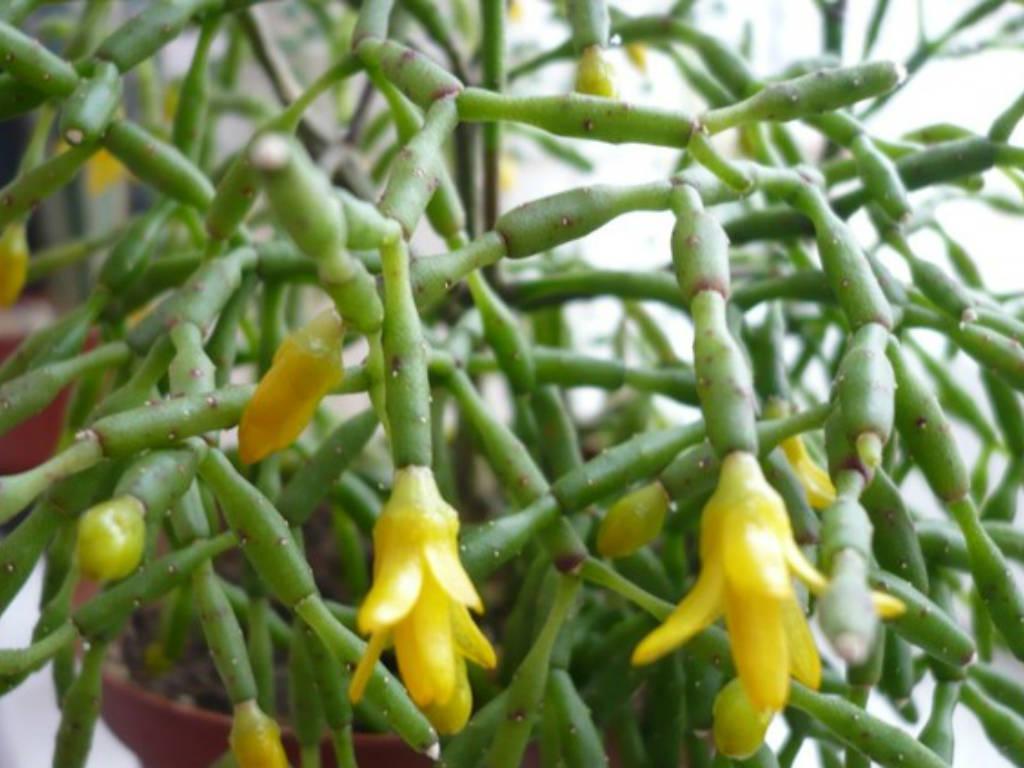
How to Grow and Care
Hatiora thrives best in indirect light with exposure to morning and evening sun. Hatioras prefers spring, summer, and fall temperatures around 75-80 °F (24-27 °C). Winter temperatures should be between 45-65 °F (7-18 °C) only. It prefers a well drained soil. Cactus or epiphytic compost works well. It can be propagated easily through cuttings that can root immediately in soil. Hatiora likes long nights of about 14 hours. Cover the plant with a paper bag to shut out sunlight. Try not to reposition the plant once flower buds appear, as these could fall off during any movement. It needs a month’s rest after flowering, so water sparingly during this period. Hatioras prefers fertilization every 14 days. Use a balanced 10-10-10 fertilizer, and dilute to half strength.
Hatiora salicornioides (Haw.) Britton & Rose
Common Names
Dancing Bones, Dancing Bones Cactus, Drunkard’s Dream, Spice Cactus, Bottle Cactus

Synonyms
Rhipsalis salicornioides (basionym)
Scientific Classification
Family: Cactaceae
Subfamily: Cactoideae
Tribe: Rhipsalideae
Genus: Hatiora

Description
Hatiora salicornioides is a slender, erect, arching or somewhat pendent, bushy, cactus, up to 2 feet (60 cm) tall. A stem consists of smaller segments, up to 1.2 inches (3 cm) long. The flowers are small, bell-shaped, orange yellow in color, up to 0.8 inch (2 cm) long and in diameter.

How to Grow and Care
Hatiora thrives best in indirect light with exposure to morning and evening sun. Hatioras prefers spring, summer, and fall temperatures around 75-80 °F (24-27 °C). Winter temperatures should be between 45-65 °F (7-18 °C) only. It prefers a well drained soil. Cactus or epiphytic compost works well. It can be propagated easily through cuttings that can root immediately in soil. Hatiora likes long nights of about 14 hours. Cover the plant with a paper bag to shut out sunlight. Try not to reposition the plant once flower buds appear, as these could fall off during any movement. It needs a month’s rest after flowering, so water sparingly during this period. Hatioras prefers fertilization every 14 days. Use a balanced 10-10-10 fertilizer, and dilute to half strength.
1
1
文章
Dummer. ゛☀
2017年10月02日

Scientific Name
Dudleya caespitosa (Haw.) Britton & Rose
Common Names
Sea Lettuce, Sand Lettuce, Coast Dudleya, Coastal Dudleya, Bluff Lettuce
Synonyms
Cotyledon caespitosa, Cotyledon helleri, Cotyledon linguiformis, Cotyledon reflexa, Dudleya cotyledon, Dudleya helleri, Echeveria caespitosa, Echeveria californica, Echeveria cotyledon, Echeveria helleri, Sedum cotyledon
Scientific Classification
Family: Crassulaceae
Subfamily: Sedoideae
Tribe: Sedeae
Subtribe: Sedinae
Genus: Dudleya
Description
Dudleya caespitosa is a rosette form succulent up to 8 inches (20 cm) wide, containing up to 30 leaves. The leaves are fleshy, pale green, and cone-shaped to oblong, up to 1 inch (2.5 cm) wide and up to 0.4 inch (1 cm) thick. The stem is a caudex which grows erect up to 8 inches (20 cm) in height before branching into the inflorescence. Its color is variable, from green to red and yellow shades. At the top is a tall inflorescence which may hold 10 or 15 flowers on each of several branches. The flowers are bright yellow with pointed petals.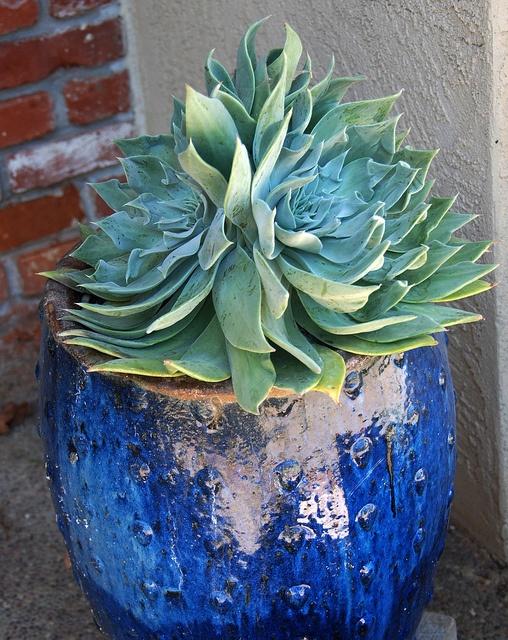
How to Grow and Care
Most of the myriad habitats Dudleyas occupy become dry in summer. Therefore, it is important to cut off water to Dudleyas in your garden during summer. Plants grown in sandy soils or containers are exceptions; they will accept infrequent summer watering as long as the soil drains well. The onset of fall or winter rains reawakens Dudleyas from drought-induced dormancy.
Dudleya caespitosa (Haw.) Britton & Rose
Common Names
Sea Lettuce, Sand Lettuce, Coast Dudleya, Coastal Dudleya, Bluff Lettuce

Synonyms
Cotyledon caespitosa, Cotyledon helleri, Cotyledon linguiformis, Cotyledon reflexa, Dudleya cotyledon, Dudleya helleri, Echeveria caespitosa, Echeveria californica, Echeveria cotyledon, Echeveria helleri, Sedum cotyledon
Scientific Classification
Family: Crassulaceae
Subfamily: Sedoideae
Tribe: Sedeae
Subtribe: Sedinae
Genus: Dudleya

Description
Dudleya caespitosa is a rosette form succulent up to 8 inches (20 cm) wide, containing up to 30 leaves. The leaves are fleshy, pale green, and cone-shaped to oblong, up to 1 inch (2.5 cm) wide and up to 0.4 inch (1 cm) thick. The stem is a caudex which grows erect up to 8 inches (20 cm) in height before branching into the inflorescence. Its color is variable, from green to red and yellow shades. At the top is a tall inflorescence which may hold 10 or 15 flowers on each of several branches. The flowers are bright yellow with pointed petals.

How to Grow and Care
Most of the myriad habitats Dudleyas occupy become dry in summer. Therefore, it is important to cut off water to Dudleyas in your garden during summer. Plants grown in sandy soils or containers are exceptions; they will accept infrequent summer watering as long as the soil drains well. The onset of fall or winter rains reawakens Dudleyas from drought-induced dormancy.
0
0



